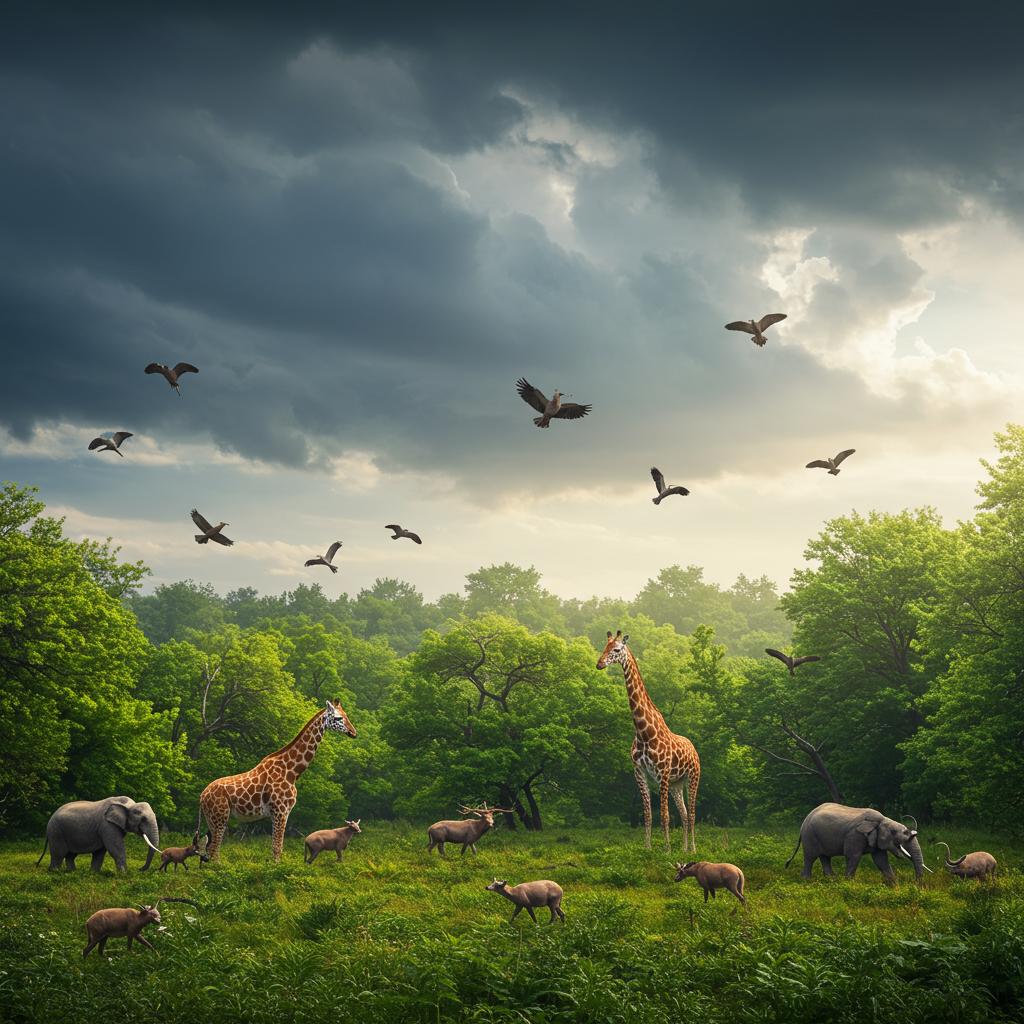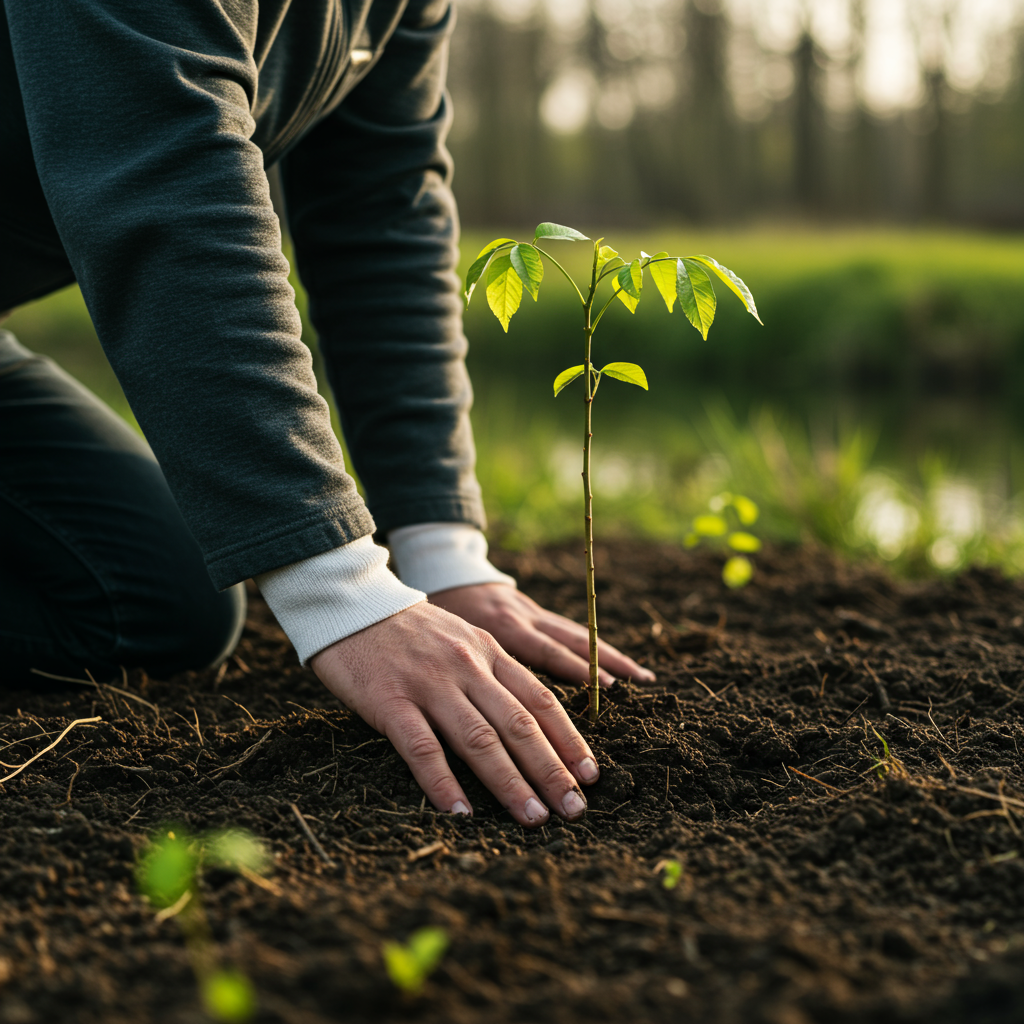
Table of Contents
Introduction
Climate change stands as one of the most pressing environmental challenges of our time, profoundly affecting the rich tapestry of life on Earth. Have you ever wondered how shifts in the climate are reshaping the natural world and threatening the delicate balance that sustains diverse species? This article explores the significant impact climate change has on biodiversity, underscoring why understanding this relationship is crucial for preserving our planet’s future.
The significance of climate change as a driver of biodiversity loss cannot be overstated. Global temperatures are rising at an unprecedented rate, causing alterations in habitats, weather patterns, and ecosystems. According to scientific assessments, over one million species face extinction threats, many directly linked to changing climatic conditions. These transformations not only disrupt individual species but also compromise the ecosystem services humanity depends on, such as pollination, water purification, and climate regulation. Recognizing the gravity of these changes helps us see why biodiversity conservation amid climate shifts is a vital global priority.
For many communities, the consequences of biodiversity loss are felt keenly — from diminishing fisheries that supply food to the loss of medicinal plants vital for health. Such losses evoke an emotional connection, highlighting the intrinsic value of nature and its irreplaceable benefits. When species disappear or habitats degrade, we lose more than just biodiversity; we lose a part of our heritage and the natural beauty that enriches human life. This emotional resonance motivates conservation efforts and fosters a deeper commitment to mitigating climate impacts on nature.
Addressing climate change’s effects on biodiversity also raises questions and concerns for many readers. How do rising temperatures influence migration patterns or reproductive cycles of wildlife? What signs indicate that ecosystems are under stress? Can mitigation and adaptation strategies truly help reverse biodiversity declines? These inquiries guide the exploration in this article, providing evidence-based responses to inform and empower readers. Before diving into specifics, it’s important to understand the broader context and urgent need for action to protect biodiversity in the face of ongoing climate change.
What You’ll Learn in This Guide
In this comprehensive guide, we’ll walk you through the complex relationship between climate change and biodiversity, explaining why this topic demands your attention and how you can contribute to solutions. Here’s what we’ll cover:
- Understanding Climate Change: We will break down what climate change is, identifying its causes such as greenhouse gas emissions and deforestation, and explain its broad environmental impacts that set the stage for biodiversity threats.
- Impacts on Species and Ecosystems: Explore how climate change directly and indirectly affects individual species’ survival, habitat, and behavior, as well as the overarching balance and functioning of ecosystems worldwide.
- Indicators of Biodiversity Loss: Learn to recognize the observable signs such as population declines, habitat fragmentation, and changes in migration that signal biodiversity distress driven by climate shifts.
- Mitigation and Conservation Strategies: Discover practical approaches to reducing climate impacts on biodiversity including emission reductions, habitat restoration, and adaptive management, empowering readers with actionable knowledge.
This article will guide you in understanding the mechanisms behind climate-induced biodiversity changes, the consequences on both natural and human systems, and the ongoing efforts to safeguard the natural world. By unpacking complex science in an accessible way, we aim to equip you with insights that inspire thoughtful action and responsible stewardship of our planet’s biological heritage.
The journey ahead covers the causes and effects of climate change with a lens on biodiversity impacts, signs that reveal the urgency of the situation, and effective strategies for mitigation and conservation. We’ll also discuss the roles individuals, communities, and policymakers can play in supporting resilient ecosystems. With each section, you will gain a clearer picture of the challenges and hopeful pathways forward.
Engaging with this topic is more than an academic exercise; it’s a call to appreciate the interconnectedness of life and the critical need for proactive stewardship. As you read on, picture the many species and habitats at risk and imagine how informed action today can help preserve the vibrant diversity of life for future generations. Let’s embark on this exploration together with curiosity, concern, and a commitment to making a positive difference.

Continuing from our introduction to the impact of climate change on biodiversity, it is essential to delve deeper into how these global environmental shifts specifically threaten the various forms of life on our planet. Climate change alters habitats, disrupts ecological processes, and imposes stressors on species that can lead to irreversible loss of biodiversity. Understanding these dynamics provides the foundation for supporting effective conservation and mitigation efforts as we navigate this complex challenge. In the following discussion, we will explore the signs of biodiversity loss linked to climate change and then discuss strategic treatment and mitigation approaches to protect and restore our natural world.
Signs of Biodiversity Loss Due to Climate Change
The visible and measurable changes in biodiversity are critical indicators that climate change is impacting species and ecosystems worldwide. These signs manifest across various levels, from individual species populations to entire habitats and ecological communities. Observing and monitoring these signs helps scientists, conservationists, and policymakers identify the severity and immediacy of threats, enabling targeted actions to address and reverse declines. Recognizing these indicators early is crucial for mobilizing effective responses before irreversible damage occurs.
Many affected ecosystems demonstrate loss through reductions in species numbers as well as alterations in behaviors crucial for survival. Shifts in migration and feeding patterns, for example, reveal how animals are adapting to changing climatic conditions, although not always successfully. Habitat degradation and fragmentation further exacerbate these stresses, often making it difficult for wildlife to find food, reproduce, or move to more suitable environments. Climate-induced biodiversity loss also compromises ecosystem services that humans rely on, such as pollination, water purification, and carbon sequestration.
Observable Signs
The following signs are among the most prominent indicators that climate change is driving biodiversity loss across the planet.
- Reduction in species populations: Many studies report declining numbers of species ranging from insects to large mammals, due to habitat shifts, changing food availability, and increased mortality from altered climatic conditions.
- Habitat degradation and fragmentation: Climate change contributes to the loss and break-up of natural habitats, which isolates populations and limits genetic diversity, essential for resilience in changing environments.
- Changes in migration and feeding patterns: Altered timing and routes of migration alongside changes in feeding habits reflect distress as species struggle to align their life cycles and behaviors with new environmental realities.
Treatment and Mitigation Strategies
Addressing the biodiversity crisis wrought by climate change requires a multipronged approach that combines reduction of climate drivers with proactive ecological restoration and adaptation. Implementing effective treatment and mitigation strategies is vital for conserving species, restoring ecosystems, and sustaining the vital services nature provides to humanity. These strategies often involve collaboration across communities, governments, and scientific fields to foster resilience and long-term sustainability in the face of ongoing climate challenges.
Mitigation efforts focus on reducing greenhouse gas emissions and enhancing natural systems to absorb carbon while protecting biodiversity. Adaptation strategies are equally important, enabling species and ecosystems to cope with new climatic conditions through thoughtful interventions such as assisted migration and habitat connectivity. Together, these approaches form an integrated framework that not only aims to halt biodiversity loss but also to promote ecosystem recovery and robust ecological function.
Mitigation Efforts
Core mitigation strategies work towards minimizing environmental harm and supporting recovery through natural and engineered means.
- Reducing greenhouse gas emissions: The cornerstone of climate mitigation involves lowering emissions through renewable energy adoption, sustainable transportation, and industrial reforms, which ultimately alleviates pressure on ecosystems.
- Restoring natural habitats: Reforestation, wetland restoration, and conservation of critical habitats rebuild biodiversity hotspots and improve ecological resilience against climatic extremes.
- Enhancing ecosystem resilience: Practices such as protecting keystone species and promoting diversity enable ecosystems to better withstand and recover from climate-related disturbances.
Adaptation Strategies
Adaptation techniques are designed to assist species and ecosystems in adjusting to unavoidable climate impacts and maintaining ecological integrity.
- Assisted species migration: Manually relocating vulnerable or keystone species to habitats better suited to future climates helps prevent extinction and supports balanced ecosystems.
- Creating protected areas and wildlife corridors: Establishing interconnected protected zones facilitates movement and genetic exchange among wildlife populations, aiding adaptation to shifting environmental conditions.
- Monitoring and managing vulnerable species: Continuous scientific tracking and proactive management help detect early signs of stress in species, allowing rapid intervention and support where needed.

Conclusion
Climate change is profoundly reshaping our natural world and presents one of the greatest threats to biodiversity. Rising temperatures, changes in rainfall patterns, ocean acidification, and habitat fragmentation are disrupting the lives of countless species and the ecosystems they inhabit. Animals and plants face increasing stress as their traditional environments shift or disappear entirely, forcing changes in migration routes, feeding habits, and reproductive cycles that often challenge survival. Ecosystems themselves lose the delicate balance maintained by diverse species, leading to declines in vital services that support life, such as pollination, water purification, and climate regulation. Observable signs like shrinking species populations, fragmented habitats, and shifting animal behaviors underscore the urgent need for effective action to mitigate biodiversity loss and its far-reaching consequences for both nature and humanity.
Addressing these complex challenges requires swift, coordinated efforts at all levels. The foremost priority is reducing greenhouse gas emissions by transitioning to cleaner energy sources, increasing energy efficiency, and adopting sustainable transportation methods. Alongside this, restoring natural habitats through reforestation, wetland recovery, and coral reef rehabilitation enhances ecosystem resilience and provides critical refuge for vulnerable species. Conservation practices such as establishing protected areas and wildlife corridors enable much-needed species movement and genetic exchange in the face of a changing climate. Continuous monitoring and research are crucial to track biodiversity health and improve intervention strategies. Individuals can contribute meaningfully by minimizing their carbon footprints, supporting local conservation initiatives, and advocating for sound environmental policies. Communities play a vital role by promoting sustainable land use, engaging in restoration projects, and increasing public awareness through education and outreach.
Though the magnitude of the climate and biodiversity crisis can feel overwhelming, hope remains in our shared capacity for responsible stewardship and collective action. By combining scientific insight with compassion and global cooperation, we can safeguard the extraordinary richness of life on Earth. Embracing both mitigation and adaptation strategies allows ecosystems to recover and thrive, ensuring a healthy planet for generations to come. Together, we possess the power to protect the intricate web of life from further unraveling and to foster a resilient, vibrant natural world.
Frequently Asked Questions
-
What is biodiversity?
Biodiversity includes the variety of living organisms on Earth from different species, genetic variations, to ecosystems. It represents the complex relationships between organisms and their environments that sustain ecological balance. Biodiversity is crucial for ecosystem health because it provides resilience to environmental changes and offers essential services such as pollination, nutrient cycling, and climate regulation. Beyond its practical benefits, biodiversity holds cultural and intrinsic value, inspiring conservation and a deeper respect for nature.
-
How does climate change threaten biodiversity?
Climate change alters habitats by shifting temperature, rainfall, and ocean chemistry, which directly stresses species and ecosystems. Many species face food shortages, mistimed reproductive cycles, emerging diseases, and increased competition from invasive species. Such disruptions lead to ecosystem imbalances and loss of ecosystem services vital to survival. The cumulative impacts increase species extinction risks, diminishing the planet’s natural resilience and undermining the foundation of life.
-
Can biodiversity recover from climate change effects?
Biodiversity recovery is possible but hinges on timely and sustained mitigation and adaptation efforts. Restoring habitats and reducing emissions slow damage and create corridors for species migration and adjustment. Conservation programs help vulnerable populations and maintain genetic diversity needed for long-term adaptation. Recovery requires commitment over extended periods, as some damage may be irreversible without intervention. Cooperation between governments, scientists, communities, and individuals accelerates progress toward positive biodiversity outcomes.
-
What can individuals do to help protect biodiversity?
Individuals contribute by reducing their carbon footprint through energy conservation, using sustainable transport, and making environmentally conscious diet choices. Supporting and volunteering with conservation groups, engaging in local restoration activities, and raising awareness all strengthen community efforts. Choosing sustainably produced goods and advocating for environmental policies promote broader systemic changes. Collectively, these actions foster healthier ecosystems and help curb biodiversity loss.
-
Where can I learn more about climate change and biodiversity?
Reliable information is available from scientific organizations, environmental NGOs, government agencies, and trusted educational websites. Participating in webinars, joining conservation groups, and reading peer-reviewed research enhance understanding. These sources provide valuable tools for involvement and updating knowledge on ongoing developments. Staying informed empowers individuals and communities to take meaningful action for biodiversity conservation.
